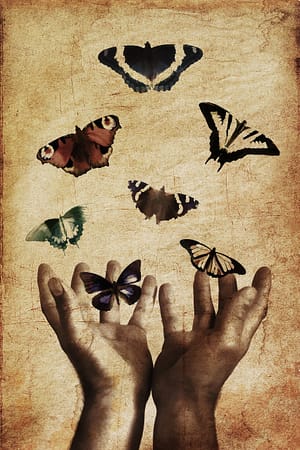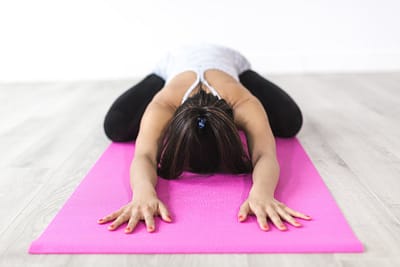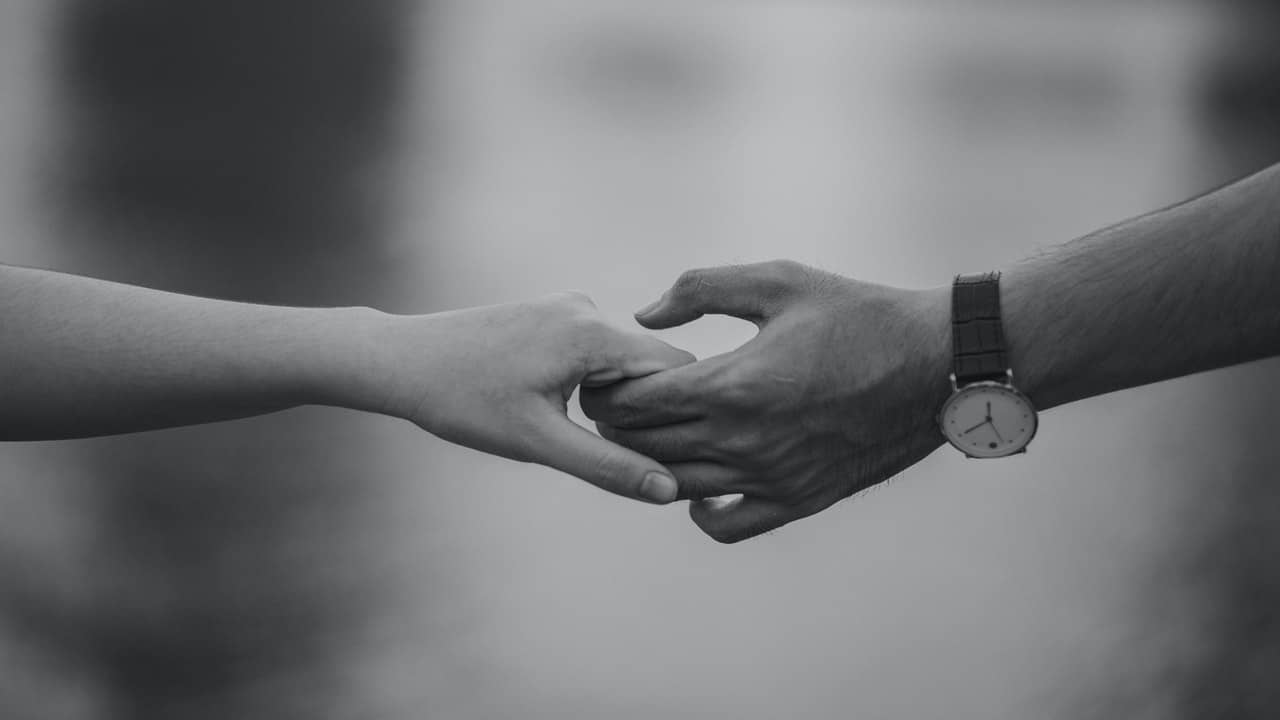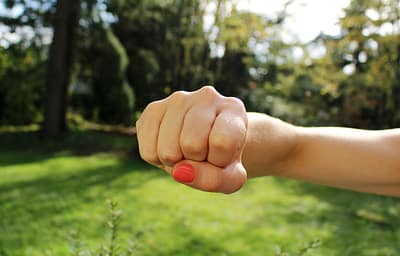
If you have taken a few yoga classes, you have probably heard a teacher mention non-attachment at some point. Usually in yoga classes it is used in reference to the thoughts. But non-attachment has a myriad of applications both on and off the yoga mat.
What is Aparigraha
There are eight limbs of yoga. What we traditionally refer to as “yoga” in the western world is actually just one limb – asana – or the movement/poses of yoga. Another of the eight limbs is the Yamas which are guidelines for ethical living. There are five Yamas – Aparigraha is one of them.
Aparigraha has several translations, you often hear it referred to as non-attachment. It can also be translated as non-possessiveness or non-greediness. I like the translation of it as non-grasping for a few reasons. First, it helps me remember the translation of the Sanskrit word – you have the “gra” in the mid-point of both words.

If we were to cling to these butterflies, they would be crushed, only through open hands can their beauty be experienced while still letting them thrive.
Second, and more important, while non-attachment does have its applications, non-grasping feels more “doable” in everyday life than either non-attachment and non-possessiveness.
There are plenty of people, things and situations that I appreciate having in my life. When taken to the extreme, non-attachment and non-possessiveness connote the idea of a monk living in a cell with no worldly possessions. Non-grasping by contrast reminds me not to cling to the things I have, but accept that they may pass in and out of my life.
I like to think of of it as the difference between holding the hand of a toddler when crossing the street (a tight grip to ensure they don’t dart off into traffic), and holding the hand of a 12-year old when you cross the street (a loose grip to let them know you are there if they need you, but they could pull away if they wanted to). If I can hold the things in my life with a loose grip, if/when it is time for them to flow away from me, I will be able to release them.
Non-Attachment on the Yoga Mat
There are two general ways to apply Aparigraha on the yoga mat. The first is your thoughts. As you practice both asana and meditation or breathwork, you will find thoughts float into your mind. The practice of non-attachment is to allow those thoughts to float back out again without getting wrapped up in a story. (I like to imagine the thoughts like clouds drifting across the sky, into and then out of my view.)
 The second way to practice non-attachment on the mat is by applying it to your expectations. When you walk into a yoga class, do you expect it to go a certain way? Are you thrown if you have a substitute teacher standing at the front of the room in to your usual weekly class? And what about how you show up on the mat – do you expect to have the same flexibility every time you practice asana? What if one day your forehead reaches the ground in child’s pose and the next it is a few inches away from touching?
The second way to practice non-attachment on the mat is by applying it to your expectations. When you walk into a yoga class, do you expect it to go a certain way? Are you thrown if you have a substitute teacher standing at the front of the room in to your usual weekly class? And what about how you show up on the mat – do you expect to have the same flexibility every time you practice asana? What if one day your forehead reaches the ground in child’s pose and the next it is a few inches away from touching?
When you step onto the mat with expectations, you set yourself up for disappointment. You also close yourself off from the possibility of an incredible experience that was different from that which you expected.
Imagine you walk into class expecting a power flow and instead the teacher offers a slower class filled with long holds. If you are unable to release the idea you should be practicing power flow, you will most likely spend the class mentally grumbling about how slowly you are moving. However, if you release your expectations and instead open yourself to exploring a different experience, you might find an opportunity for deep introspection during those long holds. Or perhaps you will find that through a longer hold you are able to better align your body into the posture resulting in a totally different experience with muscles engaging in a new way.
When we are able to step onto the mat with the willingness to release both our expectations and our thoughts as they arise, we are embodying Aparigraha.
Non-Attachment off the Yoga Mat
While I love my yoga practice on the mat, the true work begins when I step off my mat. That relaxed feeling you get when you are breathing deeply and finding a sense of stillness in your mind. It is great to be able to achieve that during your regular yoga practice. But to be able to take those lessons and apply them throughout your day – that is when the real magic happens.
Here is where the non-grasping definition really comes in handy. Aparigraha off the mat applies to the obvious things – your physical stuff (home and everything in it, your car, etc.), your relationships (friends and family), and your job, but also the less obvious item of your identity (all the things you use to define who you are).
There are different ways that non-attachment (or a loose grip) shows up in each of these categories, but grounding can help you develop a deeper sense of Aparigraha in all of them.
Grounding – what is it
Our root chakra is located at the perineum or the base of the spine. For the purposes of rooting, you can visualize it in either location (or just in that general vicinity). Each chakra is focused on different aspects of our lives. The root chakra (muladhara) is the home of our basic survival needs – food, shelter, safety. When we refer to grounding, we are talking about a process that begins in our root chakra.
Think about a tree, it has deep roots that go down into the earth to anchor it in place. The breeze may come and blow through the branches, causing the leaves to rustle, however, as long as the roots are deep in the earth, the tree stands steady in even the strongest of winds. When you come across a tree which has fallen down, it doesn’t have miles of roots hanging off behind it. Instead, for some reason, the root system gave out and was no longer able keep the tree firmly rooted in place.
 We are the same way. When we are energetically rooted or grounded, we can stand steady. While the world might push up against us, as long as we have our roots deeply anchored, we can withstand what is thrown at us.
We are the same way. When we are energetically rooted or grounded, we can stand steady. While the world might push up against us, as long as we have our roots deeply anchored, we can withstand what is thrown at us.
How does grounding apply to non-attachment
I listened to a wonderful interview between John Holden and Lauren Seiden recently. The way they described grounding directly applies to the application of Aparigraha in many aspects of your life. When you ground through a person, job, house or other object, those are all things you can lose. And that loss is a painful experience. However, when you ground through the planet, you can still have a heartfelt connection to those things. This heartfelt connection means you can cherish and enjoy these people and things, but you don’t need them.
Let’s go back to the tree analogy. If instead of growing roots deep into the earth, your tree is planted in a large flower pot and sits on your patio, no matter how thick and strong those roots grow, they will never be able to keep it from being blown over in a strong wind.
The same applies to us, if we place our expectation of safety and security in a house, a person, or an object, we can easily lose our balance and all sense of safety and security if we lose that relationship or thing, no matter how strongly we have ground through them. If however, we energetically ground into mother earth, we can still have, love, and cherish those people and things around us. While their loss could be heart wrenching, it would not leave us totally untethered. By grounding into the earth, we are able to ensure our sense of safety and security apart from anything external to us.
If you are new to the practice of grounding, this audio will help you to understand the process through a guided visualization.
Applying Aparigraha to your physical stuff
This is a life-long process, and one that takes time to develop. I suggest starting small. Once you begin the practice of regularly grounding yourself into the earth (see the audio above), start to look around your home. You may notice that some things no longer hold the same importance to you as they once did. This is a great time to begin decluttering and helping your stuff find a new home.
If you find your grounding cord is looped through physical items (its path into the earth looks like Billy’s path in Family Circus), notice that. This is a great time to journal. What are those items you are grounding through? What about them makes you feel safe and secure? Can you find that sense of safety and security in yourself, or through trust in your grounding into mother earth?
Get curious and explore. Simply visualizing your grounding cord will not immediately change your life, but it will help you to understand where you have room for work, exploration and growth.
Non-attachment and your self-identity
I think this might be the most difficult place to adopt Aparigraha. We have many ways in which we define ourselves. Some are descriptors we have heard from others (hard worker, pretty, nice, good listener), some are based in stories we tell ourselves (I’m not strong/brave/smart enough, or I am strong/brave/smart). And if you have done core values work, some of your descriptors might be based in those core values.
And while it is important to love and accept ourselves as works in progress, it is also equally important that we learn to hold these descriptors with a loose grip.
 I love this image of a loose grip – there is a connection, but to me it is the perfect visual of cherishing something while still maintaining the space of non-grasping.
I love this image of a loose grip – there is a connection, but to me it is the perfect visual of cherishing something while still maintaining the space of non-grasping.What if you hold tightly to the idea of yourself as a hard worker, but you have an accident and end up on bed rest for six weeks while broken bones heal. Not only will you be dealing with the pain of broken bones and a body that needs to heal, you will also be dealing with the pain of having something you clung tightly to ripped away from you as you will not be able to “work hard” during this period of recovery.
Perhaps you define yourself by your appearance. The first gray hairs are difficult for most of us as we come to terms with the fact that we are aging. However, imagine how much harder it is when you attach to the image of yourself as an ageless beauty.
What if the story you tell yourself is that you are not brave enough. By holding tight to that story you may miss many amazing opportunities because you did not think they were possible for you. However, if you loosen your grip and the story becomes – “once I was not brave enough to do X”. Then you are now open to the possibility of releasing that story.
As humans, I think we will always have characteristics and stories we use to define ourselves. The power comes in allowing those things to be loosely held. In practicing non-attachment to those definitions, if a time comes when they no longer apply, we are able to let them go with much more grace and ease than when we tightly grasp them, attaching to the idea that those things are immutably who we are.
Getting started
This is a deep and life-long practice. I suggest starting with the grounding visualization above. Get in the practice of visualizing your grounding cord or root plugged into the heart of mother earth.
During your yoga, meditation and breathwork practice, bring your attention to releasing any expectations you have for the practice. Focus on your breath, allow the thoughts to come and go like clouds in the sky without attaching to them or building a story around them.
Get curious and explore where you struggle to loosen your grip. Journal about the people, places and things you cling tightly to. Inquire within on how to loosen that grip.
Be gentle and kind with yourself, work to build this practice one step at a time, knowing that this is a marathon, not a sprint.
Wishing you the peace that comes from releasing attachments while grounding deep into mother earth.
If you would like additional guidance and support as you work to release attachments and find a healthier balance in your life, I would love to help! Learn more about my Nourish, Nest, Balance & Breathe One-on-One Coaching program.
Related
2 thoughts on “Practicing the art of non-attachment and how it connects to grounding”
Leave a Reply Cancel reply
This site uses Akismet to reduce spam. Learn how your comment data is processed.

What an excellent post. Thank you!
Thank you so much! I’m glad you enjoyed it!